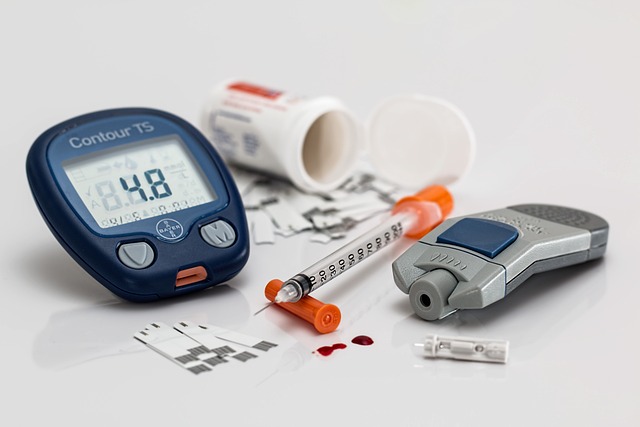In the quest for better health, understanding how the foods we eat affect our bodies is crucial. One of the most important concepts in this regard is the Glycemic Index (GI) —a tool that measures how different carbohydrates influence blood sugar levels. Whether you’re managing diabetes, aiming to lose weight, or simply striving for optimal health, grasping the role of the glycemic index can empower you to make smarter dietary choices. In this article, we’ll explore what the glycemic index is, how it impacts blood sugar, and how you can use it to improve your overall well-being.
What is the Glycemic Index?
The Glycemic Index (GI) is a numerical scale that ranks carbohydrates based on how quickly they raise blood glucose levels after consumption. Foods are scored on a scale from 0 to 100:
- Low GI (55 or less): These foods cause a gradual rise in blood sugar. Examples include whole grains, legumes, non-starchy vegetables, and most fruits.
- Medium GI (56–69): These foods lead to a moderate increase in blood sugar. Examples include brown rice, oatmeal, and sweet potatoes.
- High GI (70 or higher): These foods cause a rapid spike in blood sugar. Examples include white bread, sugary cereals, and processed snacks.
The GI of a food depends on several factors, including its fiber content, fat and protein composition, and how it’s prepared or processed. For instance, a raw carrot has a lower GI than a boiled carrot because cooking breaks down the fibers, making the sugars more accessible.
How Does the Glycemic Index Affect Blood Sugar?
When you consume carbohydrates, they are broken down into glucose, which enters the bloodstream and raises blood sugar levels. The speed and magnitude of this rise depend largely on the type of carbohydrate consumed.
- High-GI Foods: These are digested quickly, causing a sharp spike in blood sugar followed by a rapid drop. This rollercoaster effect can leave you feeling hungry, tired, and craving more high-GI foods—a cycle that may contribute to weight gain and insulin resistance over time.
- Low-GI Foods: These are digested more slowly, leading to a steady, gradual rise in blood sugar. This helps maintain energy levels, reduces hunger pangs, and promotes better long-term metabolic health.
For individuals with conditions like diabetes, where blood sugar control is critical, choosing low-GI foods can help stabilize glucose levels and reduce the need for medication.
Benefits of Eating Low-GI Foods
Incorporating low-GI foods into your diet offers numerous health benefits beyond blood sugar management:
- Improved Weight Management: Low-GI foods keep you fuller for longer, reducing the likelihood of overeating or snacking on unhealthy options.
- Enhanced Energy Levels: By avoiding sudden spikes and crashes in blood sugar, you experience sustained energy throughout the day.
- Reduced Risk of Chronic Diseases: Consistently high blood sugar levels are linked to an increased risk of heart disease, type 2 diabetes, and obesity. Low-GI diets have been shown to lower these risks.
- Better Digestive Health: Many low-GI foods are rich in fiber, which supports gut health and aids digestion.
- Improved Mental Clarity: Stable blood sugar levels also benefit brain function, enhancing focus and cognitive performance.
Factors That Influence the Glycemic Index
While the GI provides valuable insights, it’s essential to recognize that it doesn’t tell the whole story. Several factors can alter the actual impact of a food on your blood sugar:
- Food Pairing: Combining high-GI foods with protein, healthy fats, or fiber-rich foods can slow digestion and blunt the blood sugar response. For example, adding peanut butter to toast made from white bread lowers its effective GI.
- Ripeness: Fruits like bananas become sweeter and higher in GI as they ripen.
- Processing and Cooking Methods: Highly processed foods tend to have a higher GI because their structure is altered to make them easier to digest. Similarly, cooking starchy foods like pasta al dente results in a lower GI compared to overcooking them.
- Portion Size: Even low-GI foods can cause blood sugar spikes if eaten in large quantities. Moderation is key.
Practical Tips for Using the Glycemic Index
To harness the power of the glycemic index effectively, consider the following strategies:
- Choose Whole Foods: Opt for minimally processed, nutrient-dense options like quinoa, lentils, berries, and leafy greens instead of refined carbs.
- Balance Your Meals: Pair carbohydrates with lean proteins, healthy fats, and fiber to create balanced meals that stabilize blood sugar. For example, pair brown rice with grilled chicken and steamed broccoli.
- Snack Smart: Replace high-GI snacks like chips or candy with low-GI alternatives such as nuts, yogurt, or hummus with veggies.
- Read Labels Carefully: Look for products labeled “whole grain” or “high fiber,” and avoid those with added sugars or refined flours.
- Experiment with Recipes: Try swapping high-GI ingredients with low-GI substitutes. For instance, use cauliflower rice instead of white rice or zucchini noodles instead of pasta.
Limitations of the Glycemic Index
While the GI is a helpful tool, it’s not without limitations:
- Individual Variability: People respond differently to the same food due to genetics, activity levels, and other factors.
- Lack of Nutritional Context: The GI only considers the carbohydrate content of a food, ignoring its overall nutritional value. For example, watermelon has a high GI but is low in calories and packed with vitamins.
- Complexity of Mixed Meals: Most meals contain a combination of macronutrients, making it challenging to predict the exact blood sugar response.
Despite these drawbacks, the GI remains a useful guideline when combined with other nutritional principles.

Leave a Reply